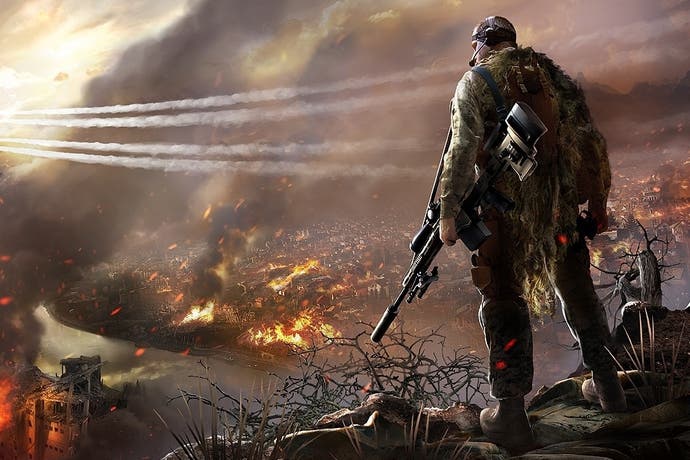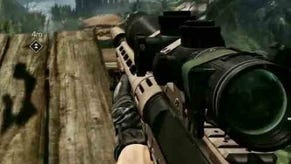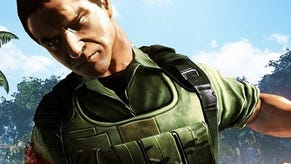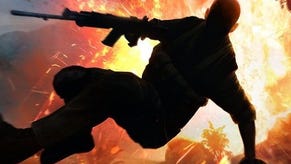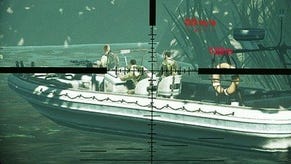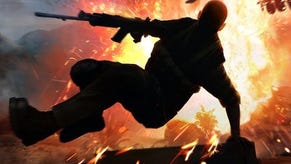Sniper: Ghost Warrior 2 review
Ghillie buggers.
You never hear the bullet that kills you, or so they say. Neither do you foresee the magic bullet that saves you - at least, City Interactive didn't. 2010's Sniper: Ghost Warrior, a budget release from the Polish publisher known only for its low-rent productions, unexpectedly changed the lives of its creators.
The game, a first-person shooter that draws heavy influence from the sniping missions in Infinity Ward's Modern Warfare titles, sold more than 2.5 million copies in the 12 months following its unassuming release, generating profits in excess of $25 million and booting its maker from the low leagues towards blockbuster development. As such, this sequel arrives bedecked in Cry Engine 3 colours with 10 missions spread across a three-act structure, all pieced together by a greatly extended team.
The kernel of appeal at the heart of any sniper game is the rhythm of planning and execution as you wiggle down in the dust, hold a finger to the air to estimate wind strength and direction and line up a reticule on a target 800-odd metres away. Ghost Warrior 2 pays off a well judged shot with a lingering slow-motion camera that tracks the bullet as it twists through the breeze. Then, a hit pause before it enters your target's body with a crunch and a splat. There's none of Sniper Elite V2's X-ray pornography here, revealing the bullet puncturing a lung or severing a testicle, but the effect is similar: a mixture of light titillation at the fatal power you wield over an unsuspecting person, and light disgust at the way in which you've chosen to express it.
In Ghost Warrior 2, this central action is nested within three types of mission. In one, you act as the lone wolf, sprinting down a narrative corridor the designer has laid for you, eliminating close targets with a knife or silenced pistol and distant targets with a crouch and snipe. The second type - which draws most heavily upon Modern Warfare's sniping excursions - pairs you with a spotter, who runs alongside you through a level, calling out targets, instructing you when to wait for the search light to pass and offering whispered encouragement for well aimed shots.
The third and final type is perhaps the strongest of the set and has you set up a .50 calibre rifle on some mountain or watchtower before taking out targets up to 1.5km away while a distant group of friendly soldiers work their way through an enemy compound. In every case, this is a game that prizes action and spectacle over grim realism, lighting up targets in your display so you rarely have to run your concentration over a landscape - but there's still a certain shooting gallery appeal running through the repetition.
The driver towards completion (as is universally the case in Modern Warfare games and their myriad cover versions) is the thrill of the shoot-them-before-they-shoot-you challenge, rather than the sub-Clancy convolutions of the plot. Ghost Warrior 2's story is a mesh of clichés, both on the macro level of its HVTs and ICBMs, and also in the detail of its dialogue, filled with banalities such as "Let's get this show on the road" and "Cry me a river". Stitched into this patchwork of impact-free familiarity is the odd moment of sharp interest - in particular, the scene in which you're required to photograph acts of genocide from a derelict building as they occur in a distant muddy field - but these moments are too few.
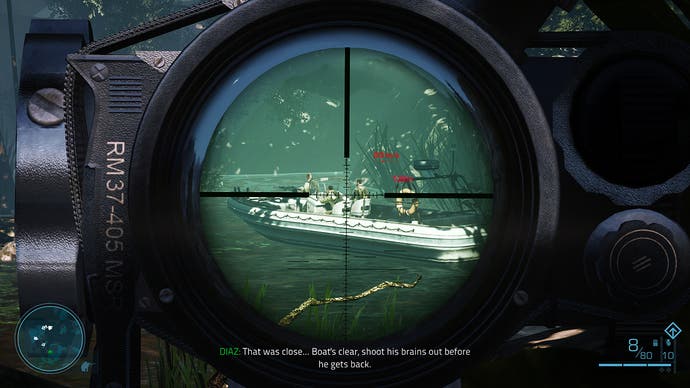
At times, it's a beautiful game, particularly during the latter stages in Tibet, but in general the team fails to work the engine as hard others have. These days the Modern Warfare template is only successful when it's delivered with a machine-gun volley of distinct ideas, presented with the flair of an action movie director. In this regard, City Interactive just can't keep up, and the thin, insubstantial core of the corridor shooter template is more fully revealed.
The game also inherits some of Modern Warfare's ugliest cinematic tricks, killing you if you wander just a few steps from the linear path and breaking the game's own rules at certain points - for example, when it wants your position to be compromised for narrative purposes. You can climb over small walls and hoist yourself up onto ledges, but only those that serve the designers' purposes. It's a clutch of treacheries that build an unshakeable sense that you're flitting through a set, not a world.
At times, the game is too easy (a problem the developer seeks to mitigate by spreading checkpoints far apart). On Easy and Normal difficulties, a red dot appears on your HUD after a few seconds to indicate where the bullet will land on a target, allowing for wind and distance. The makes faraway shots too easy but, when removed entirely on the hardest difficulty, shots become almost too great of a challenge. Despite this, there are still some light thrills to be had toppling targets.
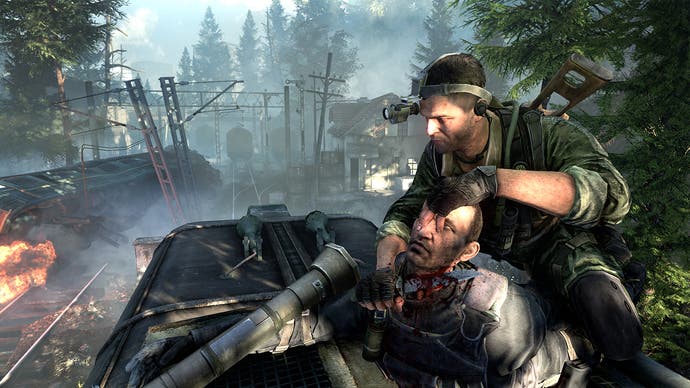
The investment of time, energy and financial hope is clear across every aspect of Ghost Warrior 2 except the multiplayer, which offers just two maps and a single Deathmatch mode. With support for up to 12 players there is something distinctive to the drawn-out wars of attrition that emerge online, but it's a curio rather than a long-term solution for the shooter player who prefers to camp and wait rather than run and gun.
A game of limited worth, then, less enjoyable than 2012's World War 2-themed Sniper Elite V2, but which demonstrates a developer on an upward trajectory nonetheless. Now City Interactive has found the money, it needs to find the confidence to strike out with some ideas of its own, else risk a derivative career that diminishes the strengths of its inspiration while accentuating its ever more present weaknesses.
